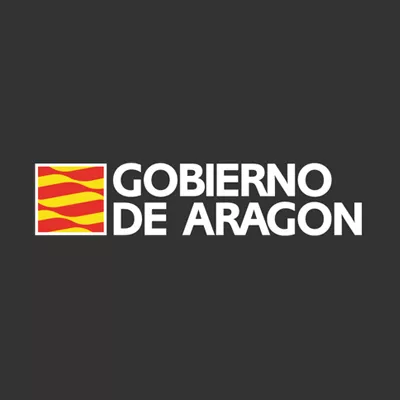General information
RDP Priority
- P4. Ecosystems management
RDP Focus Area
- 4A: Biodiversity restoration, preservation & enhancement
RDP Measure
- M13: Areas with constraints
Summary
Spain’s regional 2014-2020 Rural Development Programme of Aragon included a system of compensatory payments for farmers divided into three sub-measures: 1. payments to mountain areas; 2. payments to areas with natural constraints other than mountain areas and related to aridity; and 3. payments to areas with specific constraints that are close to mountain areas. The objective of these payments was to maintain agricultural activity in these less-productive areas.
Results
Approximately 4 300 beneficiaries and 11 000 ha of land received aid.
The percentage of public expenditure committed to measure 13 was above 85%.

Promoter
Aragon’s RDP Managing Authority
Funding
Total budget 93 440 535.32 (EUR)
EAFRD 62 291 651.55 (EUR)
National/Regional 20 763 883.85 (EUR)
Other (EURI) 10 384 999.92 (EUR)
Ressourcen
Documents
Supporting areas with constraints in Aragon, Spain
(PDF – 2.71 MB)
Context
The Aragonese rural environment faced economic difficulties due to productivity limitations in mountainous and sloping areas causing a reduced growing season and increased production costs. This is in addition to the general difficulties associated with an arid climate. The Aragonese regional government observed an increasing trend towards the abandonment of rural areas and to respond to these challenges, they included Measure 13 - Payments to areas facing natural or other specific constraints, in the 2014-2020 Rural Development Programme (RDP) of Aragon. Sub measures covered three types of aid:
- Compensation payment to mountain areas.
- Compensation payment for other areas facing considerable natural constraints, mainly derived from aridity.
- Compensation payment for other areas affected by specific constraints.
Objectives
The aim was to tackle risks of depopulation and abandonment in specific areas. In addition, this type of RDP support was programmed to contribute to cross-cutting environmental objectives. It would maintain not only agricultural activity, but also the good condition of cultivation areas in these more arduous regions, through the preservation of cover crops, to prevent soil erosion.
Activities
The RDP measure contained sub measures and these compensated farms for all, or part, of the additional costs or loss of income resulting from the limits of agricultural production in areas with constraints.
Sub measure 13.1 – for beneficiaries that were farms (with more than 50% of their income come from their farm, and more than 50% of their work conducted on their farm). These needed to be: located at altitudes equal to or greater than 1 000 meters; or involving a slope equal to or greater than 20%; or a combined altitude and slope (altitude being equal to or greater than 600 meters and the slope of at least 15%). The minimum slope could have been 12% in a limited number of municipalities surrounded by mountainous regions.
Sub measure 13.2 – for beneficiaries located in one of the municipalities classified as disadvantaged and comply with stocking rate requirements (1 Livestock Unit/ha for areas with less than 800 mm rainfall and 2 LU/ha for areas with more than 800 mm rainfall).
Sub measure 13.3 – for beneficiaries from agricultural activity in the areas designated in Aragon as being ‘areas with other specific constraints’. These areas comprise 13 municipalities that are enclaves surrounded by mountains, which fall short of meeting ‘mountain area’ requirements by just a very small margin.
In none of the three cases is a crop profile required, although the premium the farmer receives will vary depending on the crop. When calculating the premium, each crop is assigned a different coefficient to economically homogenise the limitations.
A base premium of EUR 100 per ha was established in mountain areas and those with specific constraints, and EUR 57 per ha in areas with natural constraints other than mountain areas. This was not based on actual hectares, but on the area resulting from applying coefficients per type of crop. In addition, a maximum annual aid ceiling of EUR 4 000 per beneficiary was established.
A review of the parameters for delimiting the zones led to a new delimitation in 2019 allowed inclusion of more municipalities who qualified as having constraints– although this created new budgetary limitations.
While the ‘mountain areas’ call for applications has been out every year since 2015, the ‘areas other than mountain areas’ call was only out between 2015 and 2019, and the ‘areas with specific constraints’ call - more recently - from 2019 - 2022.
Main results
Approximately 4 300 beneficiaries and 11 000 ha of land received aid.
The percentage of public expenditure committed to measure 13 was above 85%.
Key lessons
Although the support offered is not as significant as other CAP support options, it does help to compensate for decreased yields, and helps to maintain agricultural activity in remote areas.
While this aid does not guarantee the continuity of the sector, it does help farmers to minimise their losses, which consequently reduces the number who quit their agricultural activity in areas like the Aragon.
Some on-site controls were carried out remotely/online, and this reduced the number of farm visits, which means less inconvenience for farmers and a more manageable workload for assessors.
Some difficulties in the design of the measure have stemmed from the fact that it was within the integrated CAP support system and, therefore, its design was compatible with the Integrated Management and Control System.
"With this measure we maintain agricultural activity in areas that show, apart from the limitations or as a consequence of them, a trend towards abandonment."
Managing Authority
